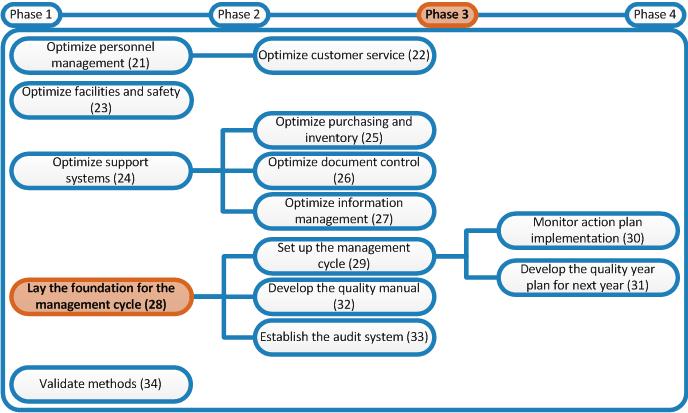
Title
Why
In the previous activity the Vision was formulated. This can be considered as the dream of the laboratory. Making a concrete policy and planning based on the Vision is not yet possible. The second step on the road to an efficient management cycle is the Mission.
What
The Mission is a statement in which the laboratory explains the methods and approaches it wants to use to fulfill the Vision. In developing the Mission you have to ask yourself the question: "What can the laboratory do to fulfill the Vision?". The answer to that question is the Mission. An example of a Mission could be "Our Mission is to provide quality laboratory services and to strengthen the national public health laboratory network through leadership and expert guidance to reduce the burden of disease". See for other examples:
- The website of the Expanded Programme on Immunization of the WHO Western Pacific Region.
- The website of The Partnership for Maternal, Newborn and Child Health
How & who
Laboratory manager:
- Organize a staff meeting to develop the Mission. As with formulating the Vision, you will increase ownership and support among your staff when you involve everybody in formulating the Mission. It also provides you with a Mission that truly reflects the point of view of the total organization.
- Develop the Mission of the laboratory. First explain what it is and why it should be developed. Then start brainstorming to create the perfect Mission. Note that the Mission should thus be a bit more concrete. It explains the general approach you want to take and the methods you want to use. The Mission must be a short, concise statement of no more than 150 words.
- Print the Mission on the same document as the Vision and store it at the same location (as first page in the folder Organization).
- Optional: you could create an attractive sign with the Vision and Mission of the laboratory which you could place above the entrance. This shows to visitors the character of the laboratory and that it takes its work serious.

